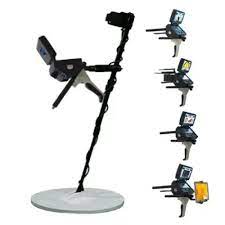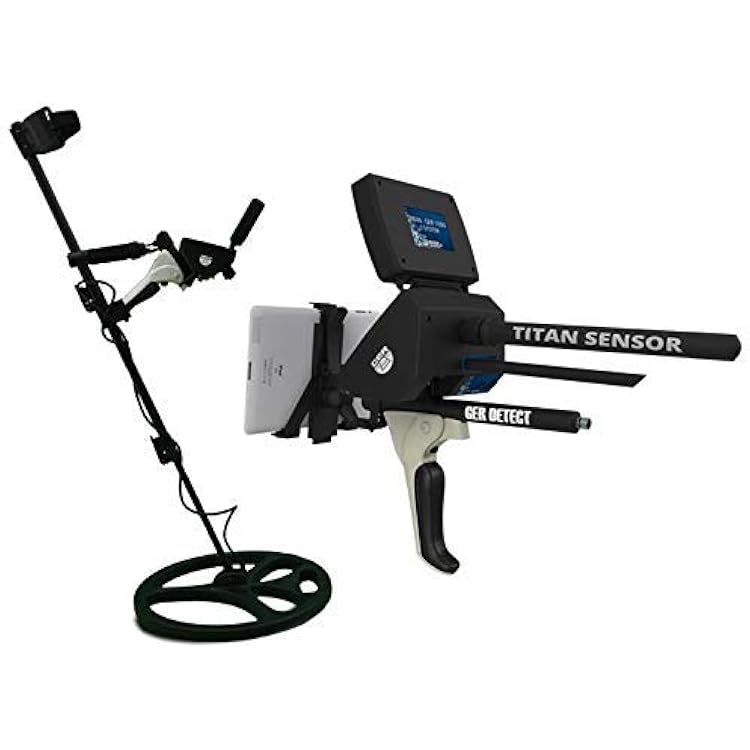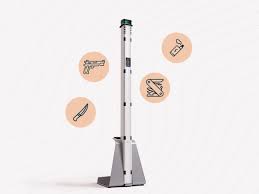3D metal detectors have revolutionized the field of archaeological excavations by providing more accurate and detailed information about bur...
3D metal detectors have revolutionized the field of archaeological excavations by providing more accurate and detailed information about buried artifacts and structures. In this article, we will explore the use of 3D metal detectors in archaeological excavations and how they have enhanced our understanding of the past. These advanced tools have allowed archaeologists to german gold detector uncover valuable historical artifacts and monuments with precision and efficiency. Let's delve into the fascinating world of 3D metal detectors and their impact on archaeological research.
Exploring the use of 3D metal detectors in archaeological excavations involves utilizing advanced technology to locate and map buried metallic objects in the ground. This allows archaeologists to conduct more efficient and systematic surveys of archaeological sites, aiding in the discovery and preservation of artifacts. The use of 3D metal detectors can also provide valuable information about the layout and structure of ancient settlements, gravesites, and other historical features. This technology has the potential to greatly enhance the accuracy and precision of archaeological groundtech detectors fieldwork.
Exploring the use of 3D metal detectors in archaeological excavations involves incorporating cutting-edge technology to aid in the location and mapping of buried metallic objects within archaeological sites. This advanced tool allows for more efficient and thorough surveys, contributing to the discovery and preservation of valuable artifacts. Additionally, 3D metal detectors can provide insights into the layout and structure of ancient settlements and historical sites, significantly improving the precision and accuracy of archaeological fieldwork.
Exploring the Benefits of Using a 3D Metal Detector
gold detector device

Exploring the Benefits of Using a 3D Metal Detector 3D metal detectors offer numerous benefits to users, including increased accuracy and precision in locating metal objects. These advanced detectors utilize cutting-edge technology to provide detailed, three-dimensional images of buried items, allowing users to better understand the size, shape, and depth of the target. This can be particularly useful in archaeological and treasure hunting applications, where a more comprehensive understanding of the target can inform excavation strategies and enhance the likelihood of a successful discovery. Additionally, 3D metal detectors often feature advanced discrimination capabilities, allowing users to distinguish between different types of metals and minimize the risk of digging up unwanted objects. Overall, the utilization of 3D metal detectors can greatly improve the efficiency and effectiveness of metal detection activities.
Understanding the Technology Behind 3D Metal Detectors

3D metal detectors use advanced technology to accurately detect and visualize the location, depth, and size of buried metallic objects. These detectors typically use a combination of various sensor technologies, such as pulse induction and very low frequency, to achieve high levels of accuracy and precision in metal detection. Additionally, they often incorporate sophisticated signal processing algorithms and software to create three-dimensional visual representations of the detected objects, allowing users to better understand the nature of the buried items. These detectors are commonly used in archeological surveys, industrial applications, and security screening to identify and locate buried metallic objects with improved efficiency and effectiveness.
How 3D Metal Detectors Revolutionize the Searching Process

Three-dimensional (3D) metal detectors have revolutionized the searching process by providing a more accurate and comprehensive view of the area being scanned. Traditional metal detectors offer a one-dimensional signal, making it difficult to determine the size, shape, and depth of a detected object. With 3D metal detectors, users can gain a better understanding of the target's characteristics before excavation. This technology allows for more precise digging, reducing the risk of damage to valuable objects or the surrounding environment. Additionally, 3D metal detectors can cover larger areas in less time, making the searching process more efficient and productive. Overall, these advancements in metal detection technology have greatly improved the way professionals and hobbyists search for buried treasures, artifacts, and other valuable items.
The Advantages of Investing in a 3D Metal Detector
Investing in a 3D metal detector can provide several advantages for individuals and businesses. One of the main benefits is the ability to accurately locate metal objects in various types of terrain. 3D metal detectors can offer detailed information about the size, depth, and composition of metallic targets, making them a valuable tool for archaeologists, treasure hunters, and construction companies. Additionally, many 3D metal detectors are equipped with advanced technology to filter out unwanted signals and provide more precise detection results. Finally, these detectors can cover larger areas in less time, increasing efficiency and productivity for users. Overall, investing in a 3D metal detector can lead to more successful and productive metal detecting endeavors.
Maximizing Efficiency with the Latest 3D Metal Detectors
Maximizing efficiency with the latest 3D metal detectors involves taking advantage of advanced features such as multi-frequency technology, improved target identification, and faster response times. These detectors offer greater depth penetration and higher sensitivity, allowing for more accurate and efficient metal detection in various environments. Additionally, the latest 3D metal detectors often come with customizable settings and user-friendly interfaces, allowing operators to optimize performance for specific applications. By utilizing the latest 3D metal detectors, businesses can enhance productivity, reduce waste, and improve overall operational efficiency.
The Applications of 3D Metal Detectors in Different Fields<
okm fusion light/h2>
The applications of 3D metal detectors are vast and diverse across different fields. In archaeology, 3D metal detectors are used to locate buried artifacts and archaeological sites, aiding in the discovery and preservation of historical and cultural heritage. In the construction industry, these detectors are employed to locate buried utilities and infrastructure, ensuring safety and preventing damage during excavation and construction projects. Additionally, 3D metal detectors are also utilized in the mining and exploration industry to locate and map mineral deposits underground. These detectors are also used in security and law enforcement to detect concealed weapons and contraband in public areas. Furthermore, 3D metal detectors have applications in environmental studies, such as locating and mapping buried pipelines and monitoring soil and groundwater contamination. Overall, the advancements in 3D metal detector technology have expanded their use in various fields, providing valuable insights and aiding in critical decision-making processes.
Choosing the Right 3D Metal Detector for Your Needs
When choosing a 3D metal detector, it's important to consider the specific needs and requirements you have for the device. Factors to consider include the type of metals you'll be detecting, the depth at which you'll be searching, the environment in which you'll be using the detector, and any additional features or capabilities you may need. It's also important to consider your budget and find a detector that offers the best value for your money. Researching and comparing different models and reading user reviews can help you make an informed decision. Ultimately, choosing the right 3D metal detector for your needs will depend on finding a balance between performance, features, and affordability.
Enhancing Accuracy and Precision with 3D Metal Detectors
Enhancing accuracy and precision with 3D metal detectors involves incorporating advanced technology and algorithms to improve the device's ability to differentiate between different types of metals and accurately pinpoint their location in three dimensions. This can be achieved through the use of multiple sensors, signal processing techniques, and machine learning algorithms to analyze and interpret the data collected by the detector. Additionally, improvements in hardware components such as coils and transmitters can also contribute to enhanced accuracy and precision in detecting metal objects. Overall, the goal is to minimize false alarms and provide more detailed information about the size, shape, and composition of the detected metal targets.
The Future of Metal Detection: 3D Technology on the Rise
The future of metal detection is being shaped by the rise of 3D technology, which offers a more advanced and accurate method of detecting metal objects compared to traditional 2D technology. 3D metal detection systems provide a more comprehensive view of the scanned area, allowing for greater precision in identifying the location and shape of metal objects. This can lead to increased efficiency and accuracy in various applications, such as security screening, industrial quality control, and archaeological excavation. Additionally, the use of 3D technology in metal detection is expected to continue to evolve and improve, with the potential for further advancements in detection capabilities and integration with other technologies. Overall, the integration of 3D technology in metal detection has the potential to revolutionize the way metal objects are detected and identified in a wide range of industries.
Unlocking Hidden Treasures with 3D Metal Detectors
Unlocking hidden treasures with 3D metal detectors involves using advanced technology to accurately scan and visualize underground objects. These detectors are capable of detecting metals, artifacts, and other buried items at greater depths compared to traditional metal detectors. 3D metal detectors provide detailed imaging and mapping of the detected objects, allowing users to pinpoint their exact location and plan excavation or retrieval accordingly. This technology has revolutionized the field of treasure hunting and archaeological exploration, enabling enthusiasts and professionals to discover and recover valuable historical artifacts and valuable items with more precision and efficiency.
